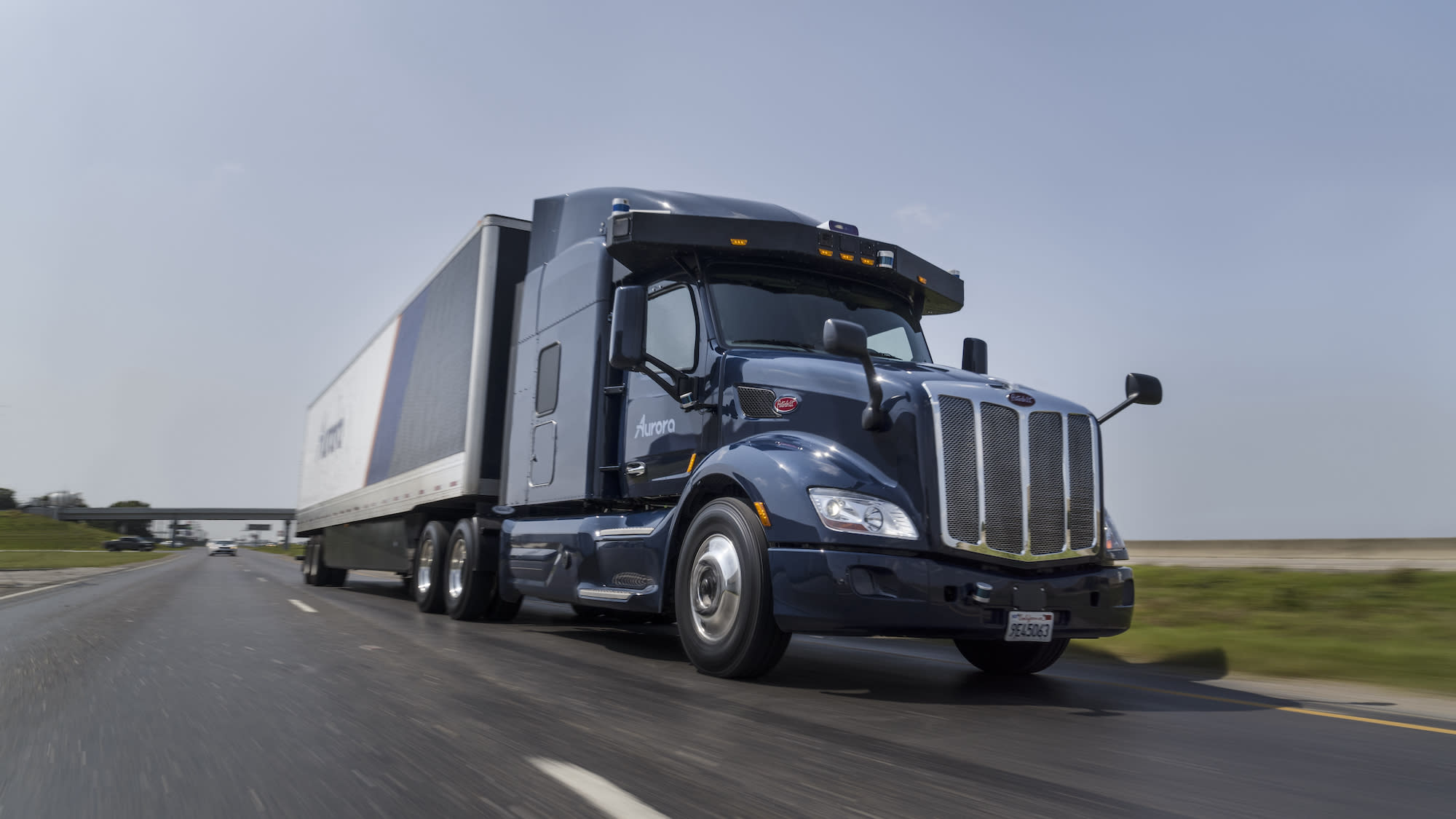5 important updates from Aurora’s first business review as a public company
Recap | February 18, 2022 | 3 min. read

We just held Aurora’s first-ever business review call as a public company, and we’re excited to share recent progress on our path toward deploying safe, scalable self-driving technology. From new freight routes to expanded pilot programs, here’s what stood out:
The road to El Paso: Addressing supply chain needs

Texas plays an important role in the development of our self-driving technology. Not only is it the largest trucking market in the country, but the freight moved on Texas highways is expected to nearly double in the next 25 years.
We shared that Aurora-powered semi-trucks are now regularly driving between Fort Worth and El Paso in preparation for the launch of an upcoming pilot program.
This new route represents the middle portion of one of busiest commercial thoroughfares in the U.S. trucking industry—the road between Atlanta and Los Angeles. This is over 600 miles of highway and takes more than 9 hours of driving to traverse. Its long distance and monotony give it a highly undesirable reputation among truck drivers and, as we build the Aurora Driver to fill gaps in the supply chain, it’s an excellent place to demonstrate the value of our self-driving technology.
These demanding hauls are a great match for our Aurora Horizon trucking product. The validation work we do today helps pave the way toward autonomous trucks handling undesirable long routes, with human drivers handling shorter trips that keep them closer to their homes, families, and communities.
Partners and pilots: Increasing logistics efficiency

We’re expanding the Aurora Partnership Ecosystem as we rapidly advance the capabilities of our technology and coordinate with global leaders in freight and logistics.
During Q4 2021, we began pulling commercial loads for our partners five days a week and, in January 2022, initiated nighttime hauls.
The Aurora Driver now operates day and night on Texas roads—maintaining a 100% on-time record. We’re integrating our technology into existing freight networks, and continuing to make safety our top priority when deploying our technology.
We also shared more about our new partnership with U.S. Xpress, where we’ll leverage data from their digitally-enabled fleet to identify where our self-driving technology can best complement existing operations and help fill supply chain needs. In addition to addressing unmet demand and improving operational efficiency, we’re exploring how the growing autonomous vehicle industry can positively impact the labor market, including through investments in programs that provide opportunities for new jobs.
Aurora Horizon indications of interest: Planning for customer demand

As we’ve significantly grown our network of partners and other freight carriers, we’ve begun the first phase of the Aurora Horizon subscription reservation process.
We’ve received initial, non-binding indications of interest that now exceed anticipated launch fleet capacity through 2025, underscoring the immense demand for our autonomous trucking product. We believe these indications of interest will provide valuable insights into customer needs, which inform our trucking lane expansion plan and help us optimize how we roll out our service.
Scaling simulation: Accelerating development in virtual worlds
There are limits to how much meaningful data can be efficiently gathered from on-road driving, so we’ve developed a proprietary and highly accurate Virtual Testing Suite that helps develop, test, and validate our self-driving technology at a scale that would be impossible in the physical world.
During the fourth quarter of 2021, our team leveraged our increasingly powerful supercomputer to run approximately five million simulations per day—modeling how energy and light move through the world and enabling our team to accurately simulate camera, conventional lidar, and FMCW lidar data.
In the video above, our Virtual Testing Suite places debris in the road ahead of our autonomous vehicle, which then reacts by moving over within the lane to avoid it—providing learnings that can be applied to real-world driving.
Our Virtual Testing Suite’s high-fidelity virtual worlds simulate physically accurate sensor performance and actor behavior using data-driven procedural generation. This presents the Aurora Driver with millions of variations of on-road events we’ve seen, imagined, or created—helping train against edge cases, catch errors early, and develop new capabilities well before our software is loaded onto our autonomous vehicles.
This approach also accelerates the development of our hardware; for example, we used our FMCW simulator to evaluate how new hardware designs performed in approximately 20,000 simulated scenarios before manufacturing real-world prototypes.
Safety Case Framework progress: Completing our Vehicle Operator Safety Case

The development of the Aurora Driver is guided by our commitment to safety. In practice, this includes satisfying the claims within our Safety Case Framework—providing evidence to prove that our autonomous vehicles are safe enough to operate on public roads.
We’re excited to share that we have completed our Vehicle Operator Safety Case, meaning we have evidence to prove the safety of our autonomous driving operations with a vehicle operator onboard. We have now completed a formal safety case for all current on-road operations.
As we continue development of the Aurora Driver, we will work toward proving that our vehicles are safe enough to operate autonomously without a vehicle operator on public roads. As part of this work, we expect to demonstrate fail-safe capabilities in the third quarter of this year—showing that our vehicles can safely respond to system failures while on the road without a driver.
And if you didn’t catch it live, Aurora VP of Safety Nat Beuse recently testified on Capitol Hill about the importance of our Safety Case Framework-based approach. He shared how developing autonomous vehicle technology doesn’t mean choosing between innovation or safety—it means prioritizing both as we plan for the future of transportation.
For more on our business review, you can read our full shareholder letter here.
Delivering the benefits of self-driving technology safely, quickly, and broadly.